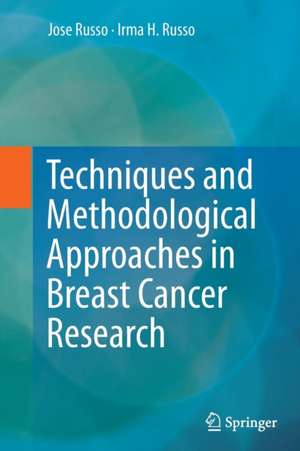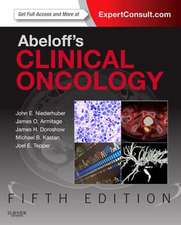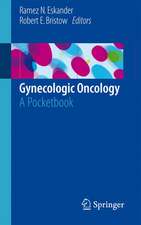Techniques and Methodological Approaches in Breast Cancer Research
Autor Jose Russo, Irma H. Russoen Limba Engleză Paperback – 2 sep 2016
| Toate formatele și edițiile | Preț | Express |
|---|---|---|
| Paperback (1) | 1094.60 lei 6-8 săpt. | |
| Springer – 2 sep 2016 | 1094.60 lei 6-8 săpt. | |
| Hardback (1) | 1101.21 lei 6-8 săpt. | |
| Springer – 14 mai 2014 | 1101.21 lei 6-8 săpt. |
Preț: 1094.60 lei
Preț vechi: 1152.22 lei
-5% Nou
Puncte Express: 1642
Preț estimativ în valută:
209.45€ • 219.27$ • 173.31£
209.45€ • 219.27$ • 173.31£
Carte tipărită la comandă
Livrare economică 05-19 aprilie
Preluare comenzi: 021 569.72.76
Specificații
ISBN-13: 9781493946624
ISBN-10: 1493946625
Pagini: 303
Ilustrații: XVI, 287 p. 192 illus., 167 illus. in color.
Dimensiuni: 155 x 235 x 16 mm
Greutate: 0.43 kg
Ediția:Softcover reprint of the original 1st ed. 2014
Editura: Springer
Colecția Springer
Locul publicării:New York, NY, United States
ISBN-10: 1493946625
Pagini: 303
Ilustrații: XVI, 287 p. 192 illus., 167 illus. in color.
Dimensiuni: 155 x 235 x 16 mm
Greutate: 0.43 kg
Ediția:Softcover reprint of the original 1st ed. 2014
Editura: Springer
Colecția Springer
Locul publicării:New York, NY, United States
Cuprins
Laser Capture Microdissection as a Tool for Compartmentalization Studies.- Histological Evaluation of the Normal Breast.- Methodology for Studying the Compartments of the Human Breast.- Methodological approach to Tissue Micro Array for Studying the Normal and Cancerous Human Breast.- In Vitro Techniques for Studying the Normal Breast and the use of Cell Lines in Breast Cancer Research.- In situ Methods for Indentifying the Stem Cell of the Normal and Cancerous Breast.- Imaging Techniques for Evaluation in vitro Behavior of Normal and Cancerous Breast Tissue.- In vivo Studies of Breast Cancer Cells.- RNA Sequencing in the Human Breast.- Methodological Approaches for the Understanding the Epigenetic Landscape of the of the Human Breast and its Implications in Cancer and Prevention.
Notă biografică
Jose Russo, M.D., FACP is a Professor and Senior Member for the Fox Chase Cancer Center. He is also the Director of the Breast Cancer and Environment Research Center at Fox Chase .In addition to his roles at Fox Chase, he is simultaneously an Adjunct Professor of Pathology and Cell Biology at Jefferson Medical College, as well as an Adjunct Professor of Biochemistry at Temple Medical School. His primary research interest includes breast cancer, endocrinology, hormonal and environmental carcinogenesis. He's received several academic and research awards for his outstanding work in the field. He's a member of numerous scientific and professional societies. He has published over 350 scientific papers. He also serves on several editorial boards for several journals including, International Journal of Oncology, Hormone Molecular Biology and Clinical Investigation, and the Journal of Medical Hypothesis and Research. In addition, he's the editor-in-chief of the Journal of Women's Cancer. He's also published several books with Springer in the past. Irma Russo, M.D., FACP, FASCP is Associate Professor at the Fox Chase Cancer Center and the Chief of the Molecular Endocrinology Section oat the Breast Cancer Research Lab. She has over 190 scientific publications.
Textul de pe ultima copertă
This book provides a detailed description of the most common techniques used in breast cancer research, with a special emphasis on the study of the normal breast as the basis for understanding the pathological processes in this organ.
The authors have poured their experience in the field of breast cancer research into this book, and described the process of handling and interpreting the complex organ that is the human breast using original data and unique material collected over the years. They have established the concept of normality of the human breast and the morphological parameters to be used for distinguishing the normal from the diseased breast. The quality of the breast tissue obtained from autopsy material vs. core biopsies are carefully detailed and discussed, showing the morphological differences among the specimens according to their collection site. The use of laser capture microdissection and tissue microarray is described in detail and discussed with special references to the problems faced when the normal breast is under study. A chapter dedicated to the use of breast cancer cell lines is crafted around the importance of each cell line and its particularities for in vitro studies. In addition, the authors explore the new concept that cancer originates from two main cell types, basal and luminal cells . Particular attention is given to the study of the phenotypes commonly used for determining cell transformation, either spontaneously or by induced chemical agents. A companion chapter using in vivo models provides the adequate tools for those interested in studying the early events of cancer initiation, progression and metastasis. Special emphasis is given to the analysis of cells either by Flow cytometry and immuno-fluorescence techniques and the great potential of the use of in situ hybridization to study RNA transcripts. The book also features an original analysis of the putative markers of stem cells in breast cancer using immuno-cytochemical techniques, their interpretation and correlation with the prognosis of the disease. The last two chapters of the book are engaged in the utilization of RNA and DNA sequencing techniques and their values in understanding the physiological differences in the human breast, as well as the utilization of epigenetic methodologies in the understanding of the normal human breast.
The authors have established the methodological basis for studying the human breast in its normal and pathological conditions providing a unique set of tools and valuable references for researchers pursuing a deeper understanding of the human breast.
The authors have poured their experience in the field of breast cancer research into this book, and described the process of handling and interpreting the complex organ that is the human breast using original data and unique material collected over the years. They have established the concept of normality of the human breast and the morphological parameters to be used for distinguishing the normal from the diseased breast. The quality of the breast tissue obtained from autopsy material vs. core biopsies are carefully detailed and discussed, showing the morphological differences among the specimens according to their collection site. The use of laser capture microdissection and tissue microarray is described in detail and discussed with special references to the problems faced when the normal breast is under study. A chapter dedicated to the use of breast cancer cell lines is crafted around the importance of each cell line and its particularities for in vitro studies. In addition, the authors explore the new concept that cancer originates from two main cell types, basal and luminal cells . Particular attention is given to the study of the phenotypes commonly used for determining cell transformation, either spontaneously or by induced chemical agents. A companion chapter using in vivo models provides the adequate tools for those interested in studying the early events of cancer initiation, progression and metastasis. Special emphasis is given to the analysis of cells either by Flow cytometry and immuno-fluorescence techniques and the great potential of the use of in situ hybridization to study RNA transcripts. The book also features an original analysis of the putative markers of stem cells in breast cancer using immuno-cytochemical techniques, their interpretation and correlation with the prognosis of the disease. The last two chapters of the book are engaged in the utilization of RNA and DNA sequencing techniques and their values in understanding the physiological differences in the human breast, as well as the utilization of epigenetic methodologies in the understanding of the normal human breast.
The authors have established the methodological basis for studying the human breast in its normal and pathological conditions providing a unique set of tools and valuable references for researchers pursuing a deeper understanding of the human breast.
Caracteristici
Explores various cutting-edge methodologies used in breast cancer research, including stem cell separation, molecular analysis of gene function and more
Explores imaging techniques that are integral for studying the physiopathology of breast cancer
Authors are well known in the field of breast cancer
Includes supplementary material: sn.pub/extras
Explores imaging techniques that are integral for studying the physiopathology of breast cancer
Authors are well known in the field of breast cancer
Includes supplementary material: sn.pub/extras










